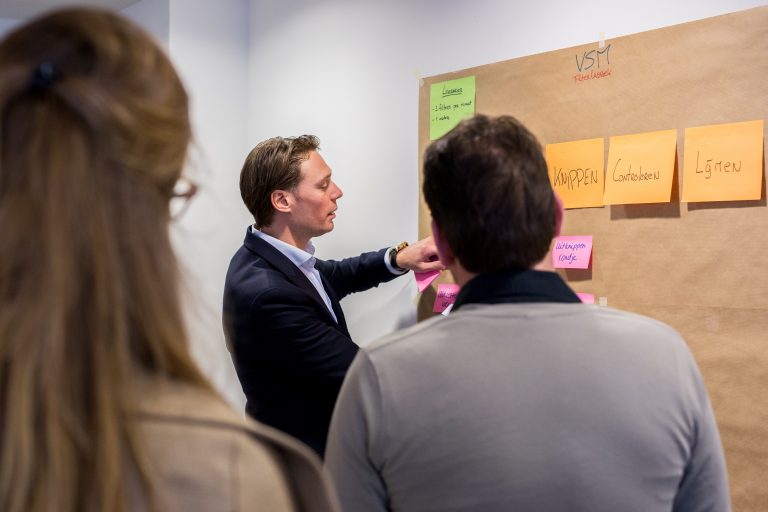Are you wondering how a Six Sigma Exam would look like? Then you’re on the right page! We’ve collected a few certified Green Belt Six Sigma Exam Questions, so you can find out what kind of questions will be asked. These questions are from an official ASQ Exam, that’s why you can use this for practice only.
1. Which option does not reflect how replication affects an experiment
a. Increase the treatment effects
b. Better estimate of the error of experiments.
c. Improve precision of experiments.
d. Better estimate of the treatment effects.
Solution: a. Replication can be done without increasing treatment effects.
2. Blocking is valid for all except:
a. A blocking factor has 2 levels.
b. A block segments the experiment
c. Blocks contribute to getting more random samples
d. A block of trials would be run together.
Solution: a. Blocking variables can have as many levels as desired.
3. Which statement about confounding is true:
a. Variables are confounded if their effects are not separable.
b. Variables are confounded due to complexity.
c. Variables are confounded if the same effects are produced.
d. Variables are confounded if they are collinear.
Solution: a. Variables are confounded if their effects are not separable
4. A sequence of four replications consists of
a. One experiment with three repetitions.
b. One experiment with three levels.
c. One experiment with three factors.
d. Planned grouping with four blocks.
Solution: a. One experiment with three repetitions is four replications.
5. A 4(3) experiment describes:
a. Four levels of three factors
b. Three levels of three factors
c. Four factors at three levels
d. Full factorial randomized block experiment
Solution: a. Four levels of three factors.
6. Designed experiments:
a. Can use quantitative and qualitative data
b. Must use quantitative data only
c. Should be normally distributed
d. Must be tracked with a control chart
Solution: a. Can use quantitative and qualitative data.
7. Designed experiments support Improvement by
a. Replicating results within a balanced design quicker than trial and error methods
b. Following a sequential cycle.
c. Expanding complexity of analysis.
d. Charting processes with control limits.
Solution: a. Replicating results through main effects and interaction effects.
8. Full Factorial experiments with 2 levels of 3 factors will require how many trials?
a. 8
b. 9
c. 6
d. 4
Solution: a. 2(3) = 2 X 2 X 2 = 8 trials since in Full Factorial all trials must be run.
9. Confounding is defined by
a. Mixing main effects and interaction effects of an experiment
b. Complicating experiments
c. Reversing Average and Range data on control charts
d. Discovering the effects of an experiment.
Solution: a. Mixing main effects and interaction effects of an experiment.
10. The following definitions are correct except:
a. A replication is a group of treatments and levels that indicates the required
experiments.
b. Randomization is a technique to increase experimental validity.
c. Treatments are the levels assigned to each factor.
d. Factors are studied for their impact on a process.
Solution: a. A block is a group of treatments, Replications are additional experiments to better
estimate experimental error.
11. The items are valid objectives for Design of Experiments except.
a. Compliance to external standards
b. Comparative
c. Screening
d. Optimization
Solution: a. Compliance to external standards is not a valid objective.
If you have any questions regarding this Green Belt Lean Six Sigma practice exam, please contact us.




